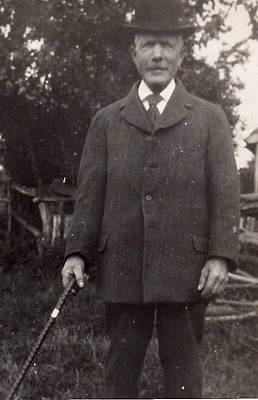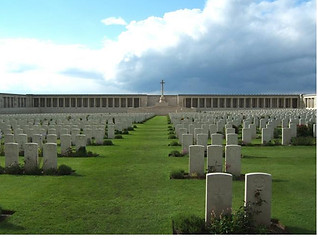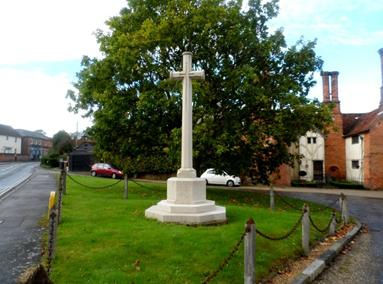
George Wilson
BRADLEY
1897-1918

Early Life
GEORGE WILSON BRADLEY was born in May 1897 in Great Waltham, the son of Thomas and Flora Bradley (née Rogers). His parents were married on the 3 October 1885 in the Parish Church in Great Waltham. Eliza was residing in Great Waltham, whilst George was a Labourer.

MARRIAGE OF THOMAS BRADLEY & FLORA ROGERS
PARISH CHURCH GREAT WALTHAM

FLORA ROGERS
(with Doris May Bradley)

THOMAS BRADLEY

BAPTISM GEORGE WILSON BRADLEY
George was baptised on the 6 June 1897 at the Parish Church at Great Waltham by the Curate, W Smith.
George was the fifth child of eight children. His elder siblings were Daisy Ruth b.27 Oct 1886, Reginald Sydney b. Sep 1888, Eleanor b.1890, Arthur Victor b. 8 May 1892 and Lucy Harriet b.1894. His younger siblings were Herbert Wilfred b.1903 and Doris May b.3 March 1907.
In 1901 the Census shows the family were living at Hill House Cottages, Great Waltham with six of their children. His father, Thomas, was working a Horseman on a farm and the family were still at the same address in 1911, when George was now a House Boy aged 18 years.


HILL HOUSE, HOWE STREET, GREAT WALTHAM
Military Life
George enlisted in the Essex Yeomanry, possibly the 1/1st Regiment, as a Private on the 14th December 1915, Regimental No. 2261. His Regimental No. was later amended to 80976.
The 1st Line regiment was mobilized at Colchester on the outbreak of the First World War and, with the Eastern Mounted Brigade, joined the 1st Mounted Division in the Ipswich area. By the end of August 1914 it was in the Woodbridge area. At the end of November, it left the brigade and on 1 December landed at Havre. The regiment joined the Royal Horse Guards and the 10th Royal Hussars in France on 12 December 1914 as part of 8th Cavalry Brigade, 3rd Cavalry Division near Hazebrouck. It remained on the Western Front for the rest of the war. As such, it was one of only six yeomanry regiments to be posted to a regular cavalry division in the war.
The brigade and division saw action in the Second Battle of Ypres (Battle of Frezenberg Ridge, 11–13 May) and the Battle of Loos (26–28 September) in 1915. 1916 saw no notable actions, but in 1917 the division took part in the Battle of Arras (First Battle of the Scarpe, 9–12 April). At other times, the brigade formed a dismounted unit and served in the trenches (as a regiment under the command of the brigadier).
In 1918 the Essex Yeomanry were part of the 8th Cavalry Brigade but on the 14th March the Brigade was broken up after 3½ years of service. The Regiment included the Royal Horse Guards as well as the Leicestershire and Essex Yeomanry Regiments.
On 14th March 1918, the 1/1st Essex Yeomanry left the brigade to become a cyclist unit, then to form a machine gun battalion with the Bedfordshire Yeomanry. The German Spring Offensive forestalled this plan, and the regiment was remounted on 28 March and sent to the 1st Cavalry Division.
Death and Memorial
Trooper George Wilson Bradley died of wounds received in action (previously reported wounded and missing) on the 1 April 1918 in France. His body was never found. On the Roll of Honour it states he was attached to the Fort Garry Horse (Canadian Regiment).
On the 1st April the Brigade was ordered to carry out a dismounted attack on Rifle Wood just north east of Moreuil. The detachment of 176 men led the Canadian Cavalry Brigade into the heavily defended wood. Losses were heavy but the attack was successful. These attacks were credited with stopping the German advance on Amiens and saving the city.


ESSEX NEWSMAN SATURDAY 1 JUNE 1918
George is remembered with Honour at the Pozieres Memorial Stone No. 7.A.
Pozieres is a village 6 kilometres north-east of the town of Albert. The Memorial encloses Pozieres British Cemetery which is a little south-west of the village on the north side of the main road, D929, from Albert to Pozieres. On the road frontage is an open arcade terminated by small buildings and broken in the middle by the entrance and gates. Along the sides and the back, stone tablets are fixed in the stone rubble walls bearing the names of the dead grouped under their Regiments.
The Pozieres Memorial relates to the period of crisis in March and April 1918 when the Allied Fifth Army was driven back by overwhelming numbers across the former Somme battlefields, and the months that followed before the Advance to Victory, which began on 8 August 1918. The Memorial commemorates over 14,000 casualties of the United Kingdom and 300 of the South African Forces who have no known grave and who died on the Somme from 21 March to 7 August 1918. The Corps and Regiments most largely represented are The Rifle Brigade with over 600 names, The Durham Light Infantry with approximately 600 names, the Machine Gun Corps with over 500, The Manchester Regiment with approximately 500 and The Royal Horse and Royal Field Artillery with over 400 names.

POZIERES MEMORIAL
George is also remembered on the War Memorial in Great Waltham.


UK, Army Registers of Soldiers' Effects, 1901-1929
Thomas, his father was his next of kin and on the 18 December 1918 he received the total sum of £15.6s.9d with a further War Gratuity payment on the 26 November 1919 of £13.
George’s mother, Flora, died in September 1919 and is buried in Great Waltham Churchyard.
George was awarded the British Medal, 1915 Star and the Victory Medal.


MEDAL CARD GEORGE BRADLEY

